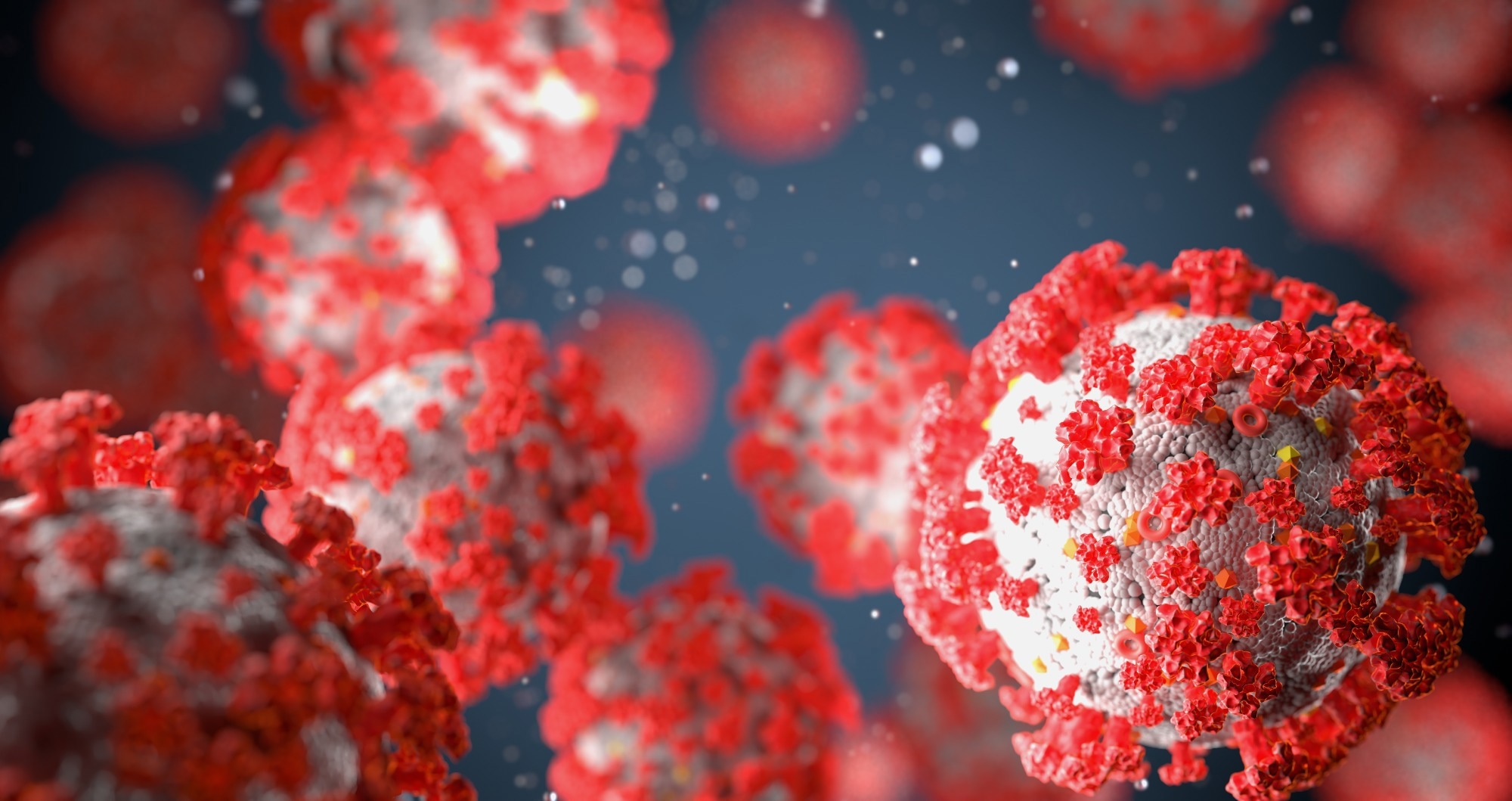The severe acute respiratory syndrome coronavirus 2 (SARS-CoV-2) has rapidly evolved throughout the coronavirus disease 2019 (COVID-19) pandemic. Several SARS-CoV-2 variants of concern (VoCs) have emerged, among which the Omicron (B.1.1.529) and its sub-lineages have led to multiple infection waves globally.
The SARS-CoV-2 Omicron variants have undergone a large number of mutations, particularly within the receptor-binding domain (RBD) and spike (S) glycoprotein. As a result, the efficacy of current vaccines and monoclonal antibody (mAb) therapies has been reduced drastically.
A new Signal Transduction and Targeted Therapy letter characterizes the structures and functions of potent bispecific antibodies (bsAbs) against multiple Omicron sublineages using cryo-electron microscopy (Cryo-EM).
 Study: Function and Cryo-EM structures of broadly potent bispecific antibodies against multiple SARS-CoV-2 Omicron sublineages. Image Credit: Iurii Kachkovskyi / Shutterstock.com
Study: Function and Cryo-EM structures of broadly potent bispecific antibodies against multiple SARS-CoV-2 Omicron sublineages. Image Credit: Iurii Kachkovskyi / Shutterstock.com
Development of Omicron RBD-directed mAbs
MB.02, MB.08, and PC.03 are recently generated Omicron RBD-directed mAbs that have strong binding activity against the Omicron BA.1 variant, with MB.02 also effective against BA.2. To obtain broad activity against VoCs, Clone13A was combined with three Omicron mAbs to generate five bispecific antibodies including CoV2-0208, CoV2-0203, CoV2-0803, CoV2-0213, and CoV2-0813.
Once all bsAbs were assembled with the expected size, enzyme-linked immunosorbent assay (ELISA) confirmed the reactivity of these bsAbs to the SARS-CoV-2 WA-1 and Delta RBDs, as well as those of Omicron BA.1 and BA.2. CoV2-0213 and CoV2-0813 exhibited strong competition with the angiotensin-converting enzyme 2 (ACE-2) receptor to bind to a wide range of SARS-CoV-2 RBDs.
Understanding the potency of bsAbs
Neutralization assays with pseudoviruses demonstrated that S309 retained neutralization activity against BA.1 and BA.1.1. However, this efficacy declined by 30-fold against the BA.2 variant.
CoV2-0213 exhibited broad-spectrum neutralization to a wide range of circulating Omicron subvariants, including BA.1, BA.1.1, BA.2, BA.2.12.1, BA.3, BA.4/5, and BA.2.75. In fact, CoV2-0213 was about 10 times more potent as compared to S309 in terms of neutralization against BA.1 and BA.1.1 and approximately 78 times more potent against BA.2.
CoV2-0203 exhibited high potency in neutralizing three Omicron sublineages; however, it was relatively weak as compared to CoV2-0213. Against BA.1 and BA.1.1, CoV2-0208 exhibited high potency; however, this potency was reduced against BA.2, which was similar to S309.
When evaluated against the Delta variant, both CoV2-0208, and CoV2-0203 lost neutralization. CoV2-0213 elicited strong neutralization capacity against Omicron BA.1, BA.1.1, and BA.2 while maintaining reasonable activity against Delta.
To further assess antibody cross-reactivity, eight human coronavirus RBD proteins were tested, including six Omicron sublineages and two β-coronaviruses. To this end, CoV2-0213 elicited strong and broad binding activity to all Omicron RBDs; however, the binding was weak against β-coronaviruses RBDs.
Determination of Cryo-EM structures
The cryo-EM structures of MB.02 Fab, in complex with Omicron BA.1 spike trimer at about 3.2 Å resolution, were determined. This led to the detection of two major S trimer conformation states, one with two RBDs up (28%) and the other with one RBD up (72%). This suggests that MB.02 is bound to the up or down conformation of RBD, irrespective of the neighboring RBD conformation.
The S trimer was bound with three Fabs in both conformations, thus indicating that the binding of MB.02 Fab is more flexible, particularly in the up conformation. MB.02 did not overlap with the ACE-2-binding interface and primarily interacted with a flexible loop region in the left shoulder region of the S protein.
The binding interface comprised two key residues of K440 and S446. Whereas K440 contacted CDRH1 and CDRH2 of MB.02, S446 interacted with the CDRL2 loop. This implies that MB.02 contains distinct binding epitopes to interact with the S protein.
S mutations in BA.2.12.1, BA.3, and BA.4/5, which were present at the CoV2-0213 binding interface, were analyzed. The S446 residue was present in BA.3 but not in BA.2.12.1 and BA.4/5. F486V was present in BA.4/5 only and can disrupt Clone 13A interaction. These observations could explain the increased binding affinity of CoV2-0213 to different Omicron subvariants.
Conclusions
CoV2-0213 exhibited significantly more activity to a larger range of assayed Omicron subvariants as compared to its parental mAbs, thus warranting an investigation of the mechanism of action. A variety of binding modes were studied; however, regardless of the actual mode, cryo-EM data supported the epitope co-engagement mechanism.
Taken together, the letter findings demonstrate the affinity and neutralization capacity of CoV2-0213 for the Omicron S protein.
Journal reference:
- Ren, P., Hu, Y., Peng, L., et al. (2023) Function and Cryo-EM structures of broadly potent bispecific antibodies against multiple SARS-CoV-2 Omicron sublineages. Signal Transduction and Targeted Therapy 8(281). doi:10.1038/s41392-023-01509-1